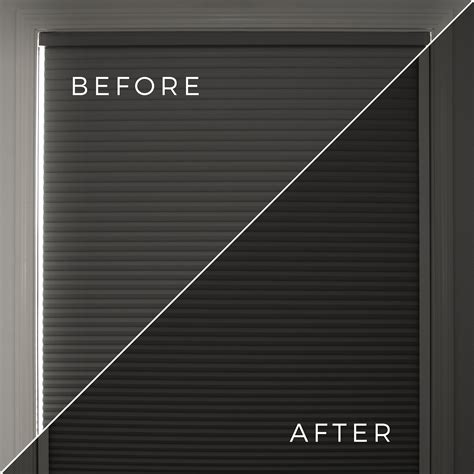Understanding the Track-Darkening Phenomenon
When working with audio or video editing software, you may have encountered a peculiar issue where the background of your project turns dark when placing a track. This phenomenon, known as “track-darkening,” can be frustrating and may affect the overall appearance of your work. In this article, we will dive deep into the causes of track-darkening and explore various solutions to mitigate this problem.
What Causes Track-Darkening?
Track-darkening occurs due to a combination of factors related to the software’s rendering engine and the way it handles transparency. When a track is placed on the timeline, the software attempts to blend the track with the background, resulting in a darker appearance. The following table outlines the primary causes of track-darkening:
| Cause | Description |
|---|---|
| Transparency Blending | The software’s rendering engine struggles to properly blend the track with the background. |
| Codec Compatibility | Certain codecs may not handle transparency well, leading to track-darkening. |
| Software Limitations | Some editing software may have inherent limitations that contribute to track-darkening. |
| Incorrect Project Settings | Improperly configured project settings, such as color space or bit depth, can cause issues. |
Troubleshooting Track-Darkening Issues
To resolve track-darkening issues, it’s essential to systematically troubleshoot the problem. Here are some steps you can take to identify and address the underlying cause:
-
Check Project Settings: Ensure that your project settings, including color space and bit depth, are correctly configured. Inconsistencies in these settings can lead to track-darkening.
-
Update Software: Make sure you are using the latest version of your editing software. Software updates often include fixes and improvements that can resolve track-darkening issues.
-
Verify Codec Compatibility: Investigate whether the codecs used in your project are compatible with the editing software. Some codecs may have limitations or known issues that contribute to track-darkening.
-
Experiment with Different Formats: Try exporting your track in different file formats to see if the issue persists. Certain formats may handle transparency better than others.
-
Seek Community Support: Engage with online forums and communities dedicated to your editing software. Other users may have encountered similar issues and can provide valuable insights and solutions.
Techniques to Avoid Track-Darkening
While troubleshooting can help resolve track-darkening issues, it’s even better to proactively avoid them. Here are some techniques you can employ to minimize the occurrence of track-darkening:
Use Appropriate File Formats
Choose file formats that are known to handle transparency well. Some recommended formats for avoiding track-darkening include:
- PNG (Portable Network Graphics)
- TIFF (Tagged Image File Format)
- ProRes 4444 (for video)
These formats support alpha channels, which allow for proper transparency handling and reduce the likelihood of track-darkening.
Adjust Blending Modes
Experiment with different blending modes available in your editing software. Some blending modes, such as “Screen” or “Lighten,” can help alleviate track-darkening by adjusting how the track interacts with the background.
Apply Opacity Adjustments
If track-darkening persists, try adjusting the opacity of the affected track. Lowering the opacity can sometimes mitigate the darkening effect and improve the overall appearance of your project.
Utilize Keying Techniques
For more advanced projects, consider using keying techniques to remove the background from your track entirely. Keying allows you to isolate the desired elements and eliminate any transparency-related issues that may cause track-darkening.

Real-World Examples and Case Studies
To better understand track-darkening and its solutions, let’s explore some real-world examples and case studies.
Case Study 1: Video Editing Project
In this case study, a video editor was working on a project that involved placing a green-screen footage track over a background. However, when the track was placed, the background turned noticeably darker, affecting the overall look of the video.
To resolve the issue, the editor took the following steps:
- Checked the project settings to ensure the color space and bit depth were correctly configured.
- Exported the green-screen footage in a ProRes 4444 format, which supports alpha channels for transparency.
- Applied a “Screen” blending mode to the track, which helped alleviate the darkening effect.
- Fine-tuned the opacity of the track to achieve the desired appearance.
By following these steps, the editor successfully eliminated the track-darkening issue and achieved a seamless integration of the green-screen footage with the background.
Case Study 2: Audio Production Project
In another example, an audio producer encountered track-darkening while working on a project that involved layering multiple audio tracks. The background of the project appeared darker than expected, affecting the visual representation of the waveforms.
To address the problem, the producer took the following actions:
- Updated the audio editing software to the latest version to ensure any known issues were fixed.
- Exported the audio tracks in a lossless format, such as WAV or AIFF, to preserve transparency information.
- Adjusted the track heights and waveform display settings to improve visibility and minimize the darkening effect.
- Experimented with different track colors to enhance contrast and readability.
By implementing these solutions, the audio producer was able to reduce the impact of track-darkening and improve the overall visual clarity of the project.

Frequently Asked Questions (FAQ)
-
What is track-darkening?
Track-darkening refers to a phenomenon where the background of a project turns darker when placing a track, typically in audio or video editing software. -
What causes track-darkening?
Track-darkening can be caused by various factors, including transparency blending issues, codec incompatibility, software limitations, and incorrect project settings. -
How can I troubleshoot track-darkening issues?
To troubleshoot track-darkening, you can check project settings, update your software, verify codec compatibility, experiment with different file formats, and seek community support. -
Are there any techniques to avoid track-darkening?
Yes, you can avoid track-darkening by using appropriate file formats, adjusting blending modes, applying opacity adjustments, and utilizing keying techniques. -
Can track-darkening be completely eliminated?
While it may not always be possible to completely eliminate track-darkening, the techniques and solutions discussed in this article can significantly reduce its occurrence and impact on your projects.

Conclusion
Track-darkening is a common issue faced by audio and video editors, but it doesn’t have to be a persistent problem. By understanding the causes of track-darkening and employing the troubleshooting steps and avoidance techniques outlined in this article, you can minimize its impact and ensure your projects maintain their desired appearance.
Remember to regularly update your editing software, choose appropriate file formats, experiment with blending modes and opacity adjustments, and seek community support when needed. With these tools and knowledge at your disposal, you’ll be well-equipped to tackle track-darkening and create visually stunning projects.

No responses yet